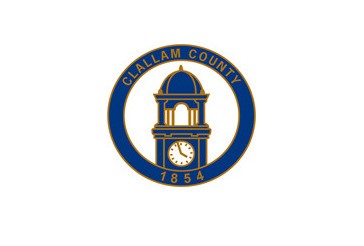Halfway through the fiscal year, the annual revenue for Clallam County’s General Fund is anticipated to be $1.3 million more than what the 2015 original budget had projected.
With nearly $33.8 million projected revenue and about $34 million expenditures, the county is on track to end the year with about $11 million in reserves — “superseding the 10 percent fund policy,” County Administrator Jim Jones, said.
“On balance, I believe the projection is reliable for the rest of this year and is looking pretty good for the next year, as the state Legislature was able to balance their budgets without the significant cuts that were warned about because of the improving economy throughout the state,” Jones told the county commissioners July 21 at the Midyear Budget Review Status public hearing.
Instead of relying on nearly $758,300 of reserve funds to cover expenditures, county officials are expected to use $212,043, according to the mid-year budget review executive summary.
“Most of the positive change was on the revenue side of the equation,” he said.
Jones attributes the increase in revenue to the local economy performing “better” than expected, thus bringing in a greater amount of sales tax coupled with more money generated from construction permits, camping fees, better investment interest and jail fees. Additionally, major costs associated with constructing a public sewer system throughout the Urban Growth Area in Carlsborg have been moved into next year’s budget.
Not only does the greater revenue reduce the amount of General Fund reserve spending, but it also assists with offsetting the costs of returning about 200 union employees from 37.5-hour workweeks to 40 hours that began May 1.
The decision to up the hourly workweek of many employees and therefore extend courthouse hours was a part of a plan developed by the county commissioners to spend down $2.51 million from the General Fund in an attempt to stimulate the local economy. As a part of the plan, the commissioners unanimously approved a resolution to notify the Washington Department of Revenue of a countywide tax holiday that began July 1. As a result, the county’s optional sales tax rate was reduced within the unincorporated county from 8.4 percent to 8.2 percent.
Despite the positive budget forecast, Mike Doherty, a former county commissioner, expressed concerns with county officials and the commissioners’ recent decision and procedures associated with spending since his retirement more than six months ago. Based on the county commissioners’ recent discussions to reduce public processes, Doherty urged the county commissioners to go the other way and include the public more.
“A lot of the big revenue, big spending decisions should be handled in that public process,” he said.
Doherty also noted his belief in “there’s a great benefit in keeping strong reserves, contingency funds and revenues flowing.”
However, eyeing last year’s inflation rate of 1.7 percent in Seattle in contrast to the interest return rate on idle cash within the county, County Commissioner Jim McEntire said, “There’s negative 0.8 percent return on money that’s in the bank,” or what he refers to as “economic dry-rot.”
“Based on that, I have often said it’s far better for us and good public policy to get that money out of the bank and put it to work in a positive way for our citizens,” McEntire told his colleagues during the public hearing, which also marks the start of the formal 2016 budget process.



